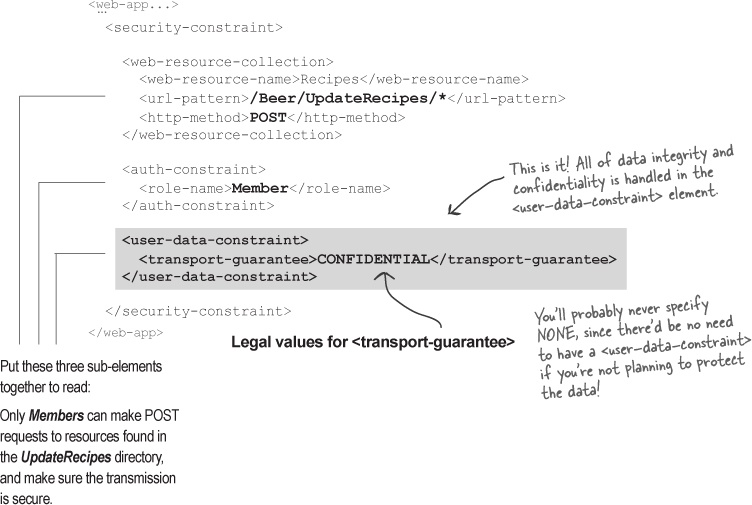How to implement data confidentiality and integrity sparingly and declaratively
Once again, we turn to the DD. In fact, we’ll use our old friend <security-constraint> for both confidentiality and integrity by adding an element called <user-data-constraint>. And when you think about it, it makes sense—if you’re thinking about authorization for a resource, you’re probably going to consider whether you want the data transmitted securely.

NONE
This is the default, and it means there’s no data protection.
INTEGRAL
The data must not be changed along the way.
CONFIDENTIAL
The data must not be seen by anybody along the way.
NOTE: although not guaranteed by the spec, in practice virtually every Container uses SSL for guaranteed transport, which means that both INTEGRAL and CONFIDENTIAL do the same thing—either one gives you both confidentiality and integrity. Since you can have only one <user-data-constraint> per <security-constraint>, some people recommend you use CONFIDENTIAL, but again, it will probably never matter in practice, unless you move to a new Container that doesn’t use SSL for guaranteed transport.
Get Head First Servlets and JSP, 2nd Edition now with the O’Reilly learning platform.
O’Reilly members experience books, live events, courses curated by job role, and more from O’Reilly and nearly 200 top publishers.

